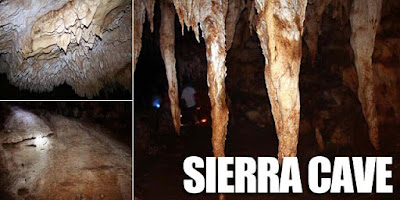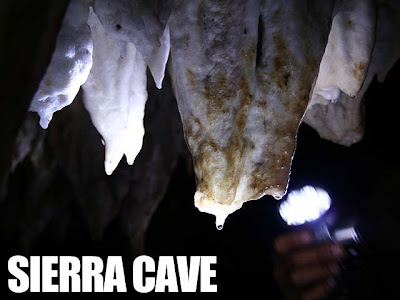
Pizza is one of my personal favorites. Those who know me should know this fact very well. So I'm compiling a list of my favorite pizza places outside Metro Manila beginning with North Philippines.
Clark Freeport & Angeles CityC' Italian Dining (1210 Don Juico Avenue, Angeles City; +63 45 8924059) is known for the
panizza. C' Italian Dining had already been serving these sumptuous pizzas rolled with arugula and alfalfa long before Yellow Cab came out with
Dear Darla. And there's no way you can compare the taste! The C'
panizza is the best!
The best sellers are
Don Carmelo: spicy chorizo, anchovies, thyme and pecorino cheese;
Kristina: bacon, ham, caramelized onion, sun dried tomatoes and mushrooms; and
Saint Jacques: scallop flakes, shrimp, sun dried tomatoes and chili flakes.
 Historic Camalig Restaurant
Historic Camalig Restaurant (292 Sto. Rosario Street, Angeles City; +63 45 3225641 or 8881077) is the home of
Armando's Pizza. My personal favorite is
Doy's Kapampangan: longganisa, ebun buru (salted duck egg), onion & pickle relish. Their newest offering is
Marco's 3-Way: sun-dried tomatoes & kesong puti plus a choice of either tuyo, tinapa or chicken adobo. Then there's
Mexican Medley: shredded chicken breast (sauteed in hot pepper & pizza sauce), fresh tomato & spring onion. Another personal favorite is the classic
Armando's Best: same toppings as
All The Way, but with extra peperoni, double ground beef, double green pepper, double mushroom & extra Canadian bacon.
Didi's Pizza (MacArthur Highway, Balibago, Angeles City; + 63 45 8921184) serves a very Filipino-flavored pizza if you know what I mean. My personal favorite is the
Combination: mushroom, salami, pepperoni, green pepper and onions.
Salvatore's Ristorante (300 Fields Avenue, Balibago, Angeles City; +63 45 8920484) serves good Italian pizza as well. Their best seller is
Italian De Luxe: salami, pepperoni, Italian sausage, mushroom, green bell pepper, onion, black olives. While the toppings of
Italian De Luxe are mixed together, another flavor called
Combination has
Vegetarian on one side, and
Meat Lovers on the other half.
Sub-Delicious (298 Fields Avenue, Balibago, Angeles City; +63 45 8921999 or 8926667) serves pizzas as large as 28-inches. Flavors include
Super Meaty: pepperoni, sausage and hamburger; and
Pizza Italiano: pepperoni, ham, and salami.
Subic Bay Freeport & Olongapo City Xtremely Expresso
Xtremely Expresso (1 Dewey Avenue cor. Sta. Rita Street, Subic Bay Freeport; +63 047 2523681) serves the 22-inch
Big Ben: pepperoni, sausage, bacon, beef, garlic, onion, peppers, mushrooms, black olives and two kinds of cheese. Other pizzas include
Spanish Sardines,
Chicken Pesto,
Chicken & Peanut,
Corned Beef, and
Spicy Salmon.
Sam's Pizza (44 Magsaysay Avenue, Olongapo City; +63 47 2223686) is an Olongapo institution. Their best-seller is
Sam's Special: pepperoni, Philippine sausage, mushrooms, green pepper, onion, bacon, Italian sausage and cheese. I remember having
Chicken Teriyaki before but they no longer have it.
La Union
 Olives Restaurant
Olives Restaurant (
Thunderbird Resort, Poro Point, La Union; +63 72 8887777) serves delicious wood-fired pizzas. Their best seller is
Four Cheese: goat, parmesan, feta and mozzarella cheese. My personal favorite is
Quattro Stagioni: kalamata olives, artichoke hearts, parma ham, fresh mushrooms. Also try the
Spicy Sausage, Roasted Peppers, Mozarrella & Oregano Pizza or the
Smoked Salmon & Mushroom Pizza: smoked salmon, fresh mushrooms, tomato sprinkled with oregano and cheese.
Ilocos Norte
 Herencia Cafe
Herencia Cafe (MacArthur Street, Bgy. 14, Sangladan, Paoay; +63 77 6140214) serves the famous
Pinakbet Pizza: sitaw (string beans), ampalaya (bitter gourd), okra, talong (egg plant), patani (lima beans), kamatis (tomaotes), sili (chili), and labanos (radish). They also serve
Bagnet Pizza: bagnet, onions, and basil; and
Dinuguan Pizza: dinuguan, crispy pork, and chili.

 Saramsam Restaurant
Saramsam Restaurant (N. Corpuz Building, Rizal cor. Hizon Streets, Barangay 7-A, Laoag City; +63 77 7715825) also serves Ilocano-inspired pizzas. Their specialty is
Poque-Poque Pizza which is topped with poque-poque, an Ilocano eggplant dish: eggplant, tomatoes, onions ang egg. They also have the
Dinardaraan Pizza: dinuguan topped with green chili peppers;
Longaniza Pizza topped with the local Laoag longaniza; and the
Carbonara Pizza topped with Currimao oysters.
Batanes Casa Napoli
Casa Napoli (Abad Street, Brgy. Kaychanarianan, Basco; +63 927 7583370) serves pizzas with mozzarella cheese all the way in Batanes. Nothing really fancy about the pizzas but being in Basco, it's a novelty.
I'm sure there are more such as those in Baguio City, so please list them down by commenting below. I'll try to visit them when I can and add to this list.





















































